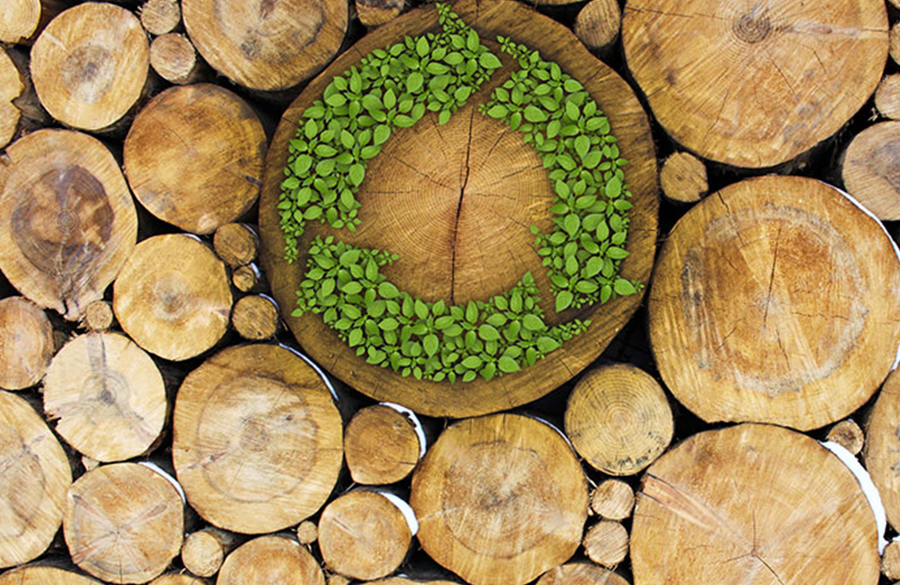What Are The Key Principles Of Sustainable Building Materials?

Greetings, fellow humans! Today, we're going to talk about sustainable construction and building materials, because why not? It's important, it's relevant, and... okay fine, maybe it's not the most exciting topic out there. But that's why I'm here - to inject a little humor into the mix and make it a little more palatable. So buckle up, here we go!
First off, let's define sustainable construction. It's pretty simple, really - it's the practice of using materials and methods that minimize the impact on the environment. Basically, we're talking about buildings that are built to last, that are energy-efficient, and that use materials that are renewable or recyclable. Now, some people might think this is all a bunch of hooey - but let me tell you, it's not. Sustainable construction is not only good for the planet, it's good for your wallet too.
What's that, you say? How can sustainable construction save you money? Ah, my dear friend, let me count the ways:
- Energy savings: Buildings that are designed to be energy-efficient use less energy, which means lower bills for you.
- Tax breaks: In some areas, you can get tax breaks for using sustainable materials or building energy-efficient homes.
- Long-term savings: Sustainable buildings are built to last, which means fewer repairs and replacements in the long run.
See? Sustainable construction isn't just for hippies and environmentalists - it's for anyone who wants to save a little money. And speaking of sustainable materials... let's talk about some of the options out there, shall we?
Bamboo
Yes, you read that right. Bamboo is a sustainable building material because it grows so darn fast - up to 3 feet per day, in fact. And because it's a grass and not a tree, it doesn't need replanting - it just keeps on growing. Plus, bamboo is strong, durable, and affordable. The only downside? It can be a little tedious to work with.
Cob
Have you ever heard of cob? It's a mixture of clay, sand, and straw that's been used as a building material for centuries. Cob is cheap, abundant (assuming you have some dirt nearby), and energy-efficient - it's great at regulating temperature. Plus, it's a lot of fun to work with. Just get your hands dirty and start sculpting!
Recycled steel
When you think of sustainable building materials, steel probably isn't the first thing that comes to mind. But recycled steel is actually one of the most eco-friendly options out there. It's strong, long-lasting, and can be recycled again and again. Plus, it's fire-resistant and won't rot, warp, or split like wood can.
Straw bales
Yep, straw bales - as in, leftover stalks from wheat or rice harvests. Sound crazy? It's not. Straw bales are super-insulated, which means they're great at keeping a building warm in the winter and cool in the summer. Plus, they're affordable, renewable, and easy to work with. The only downside? You'll need to protect them from moisture, pests, and fire.
Of course, these are just a few examples - there are plenty of other sustainable building materials out there, depending on your needs and budget. But no matter what material you choose, there are some important considerations to keep in mind. For example:
Location, location, location
Where you're building and what climate you're in will play a big part in what materials you should choose. If you're in a hot, dry area, you'll want materials that are good at insulating and regulating temperature. If you're in a wet or humid area, you'll want materials that are resistant to moisture and pests.
Certification
When choosing sustainable building materials, look for ones that are certified by reputable organizations like the Forest Stewardship Council. This ensures that the materials were sourced ethically and sustainably.
Longevity
Remember, sustainable construction isn't just about being green - it's about building something that will last. Choose materials that are durable, easy to maintain, and won't need to be replaced anytime soon.
Okay, okay, enough with the serious stuff. Let's talk about some weird and wacky sustainable buildings, just for fun. After all, if you can't have a sense of humor about something, what's the point? Here are a few of my favorites:
The Mushroom Tiny House
Yes, it's a house made out of mushrooms - sort of. The Mushroom Tiny House was built using mushroom-based insulation, which is grown from agricultural waste and bound together with mycelium (the root-like structure of fungi). It's eco-friendly, affordable, and smells mushroom-y (which could be a pro or a con, depending on your perspective).
The Dumpster
Believe it or not, someone actually built a home out of a dumpster. Of course, it's not just any old dumpster - it's been transformed into a cozy, livable space with a bed, kitchenette, and even a rooftop deck. It's a little cramped, but hey, it's sustainable!
The Plastic Bottle Village
Want to live in a house made completely out of plastic bottles? Of course you do! The Plastic Bottle Village in Panama is made up of dozens of homes, each built using thousands of recycled plastic bottles. It's colorful, quirky, and pretty darn impressive.
Okay, I think that's enough sustainable building talk for one day. But before I go, I just have one more thing to say. If you're not on board with sustainable construction yet, what are you waiting for? It's good for the planet, it's good for your wallet, and it's just plain cool. Who wouldn't want to live in a mushroom house, a dumpster, or a plastic bottle village? Okay, maybe not everyone. But why stick with the same old boring materials when you could try something new and eco-friendly? Go forth, my friends, and build sustainably!



Post a Comment for "What Are The Key Principles Of Sustainable Building Materials?"